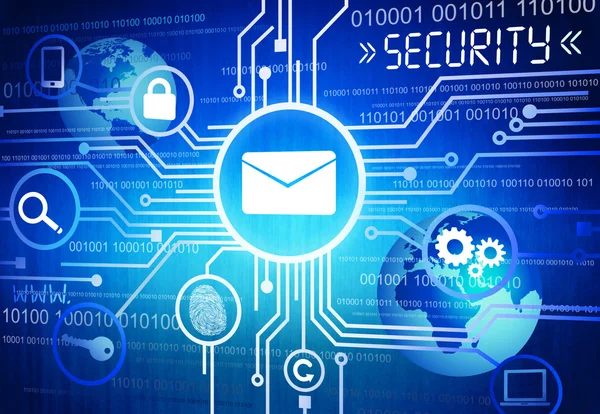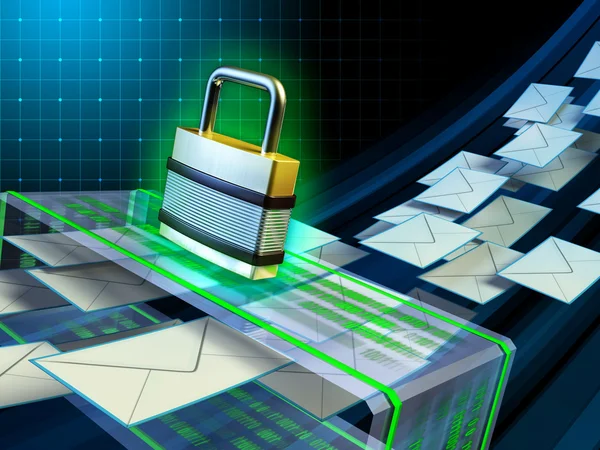Unraveling The Mystery Of DMARC Records: Your Ultimate Guide To Email Security
In the dynamic realm of cybersecurity, email security stands as a critical frontier, constantly challenged by evolving threats. Amid these challenges, Domain-based Message Authentication, Reporting, and Conformance (DMARC) emerge as a beacon of defense against email-based exploits. This guide is your gateway to unraveling the intricacies of DMARC records, providing a concise and comprehensive roadmap for fortifying your email security.
Embark on a journey with us as we demystify DMARC, delving into its fundamental principles and decoding the components of DMARC records. Whether you're a seasoned IT professional or a novice navigating the complexities of email security, this ultimate guide is tailored to empower you with the knowledge and insights needed to implement DMARC effectively. Strengthen your defenses, protect your communication channels, and secure your digital interactions by mastering the art of DMARC in this concise yet comprehensive exploration of email security essentials. For more details, click here.
Understanding the Foundation - DMARC Basics
What is DMARC?
DMARC, short for Domain-based Message Authentication, Reporting, and Conformance, is an email authentication protocol that adds an additional layer of security to the widely used SPF (Sender Policy Framework) and DKIM (DomainKeys Identified Mail) protocols. DMARC enables domain owners to specify how email receivers should handle messages from their domain that fail authentication checks.
The Triad of Email Authentication - SPF, DKIM, and DMARC
To comprehend DMARC fully, it's crucial to understand its place in the email authentication triad. SPF validates the origin of an email by checking if the sending mail server is authorized by the domain's administrators. DKIM, on the other hand, uses cryptographic signatures to verify that the email content hasn't been altered in transit. DMARC integrates these two and adds a layer of policy and reporting.

Decoding DMARC Records
Anatomy of a DMARC Record
A DMARC record is a DNS (Domain Name System) record that informs email receivers about the authentication practices of a particular domain. The record contains key information, including the policy for handling emails that fail authentication, the email addresses where reports should be sent, and details about the domain's authentication mechanisms.
The Components of a DMARC Record
- v (Protocol Version): Specifies the version of the DMARC protocol being used.
- p (Policy): Outlines the domain's policy for handling messages that fail authentication. It can be set to "none," "quarantine," or "reject."
- sp (Subdomain Policy): Similar to the 'p' tag but applies to subdomains.
- pct (Percentage): Determines the percentage of messages subjected to the policy.
- rua (Aggregate Report URI): Designates the email address to which aggregate reports are sent.
- ruf (Forensic Report URI): Specifies the email address where forensic reports are sent.
- adkim (Alignment Mode for DKIM): Defines how DKIM identifiers align with the domain.
- aspf (Alignment Mode for SPF): Specifies how SPF identifiers align with the domain.
Constructing Your DMARC Record
Creating a DMARC record involves a thoughtful approach. Organizations need to balance the enforcement level with the potential impact on legitimate emails. A gradual implementation strategy is often recommended, starting with a "none" policy to monitor without affecting the delivery of emails, before progressing to "quarantine" or "reject."
Implementing DMARC - Best Practices
Step-by-Step Implementation Guide
- Audit Your Existing Email Infrastructure: Before implementing DMARC, conduct a thorough audit of your current email authentication mechanisms, including SPF and DKIM.
- Generate a DMARC Record: Use the gathered information to construct a DMARC record tailored to your organization's needs.
- Deploy in Monitoring Mode: Initiate DMARC with a "none" policy to monitor email traffic and identify legitimate sources that may fail authentication.
- Analyze Aggregate Reports: Regularly review aggregate reports to understand your email ecosystem and make informed decisions about adjusting the DMARC policy.
- Gradual Enforcement: Once confident in your configuration, transition to a more stringent policy like "quarantine" or "reject."
Challenges and Common Pitfalls
While DMARC is a potent tool, its implementation can face challenges. Common pitfalls include misconfigurations, lack of understanding about the reporting data, and potential disruptions to legitimate email flows. Addressing these challenges requires a combination of technical expertise and a commitment to ongoing monitoring and adjustments.

The Impact of DMARC on Email Security
Reducing Email Spoofing and Phishing
Reducing email spoofing and phishing is essential for maintaining digital security. Implementing strong authentication measures, such as DMARC, helps verify the legitimacy of incoming emails, preventing cybercriminals from impersonating trusted sources. This proactive approach not only safeguards sensitive information but also instills confidence in users, fostering a more secure and trustworthy online communication environment.
Enhancing Brand Reputation
A fortified brand reputation is achieved through vigilant cybersecurity practices. Implementing measures like DMARC not only safeguards against email threats but also underscores a commitment to user trust. This proactive stance in digital security contributes to a positive brand image, ensuring reliability and integrity in online interactions.
Looking Ahead - Evolving Threats and Continuous Improvements
Adapting to New Threats
In the dynamic realm of cybersecurity, the ability to adapt to new threats is paramount. As technology evolves, so do the tactics of malicious actors. Organizations must remain vigilant, embracing a proactive stance to swiftly identify and counter emerging threats. This adaptability not only safeguards sensitive data but also ensures the continued effectiveness of cybersecurity measures, fostering a robust defense against the ever-changing landscape of digital risks.
Integration with Emerging Technologies
The integration of emerging technologies, like AI and machine learning, with email security protocols such as DMARC represents a cutting-edge approach. This fusion enhances threat detection and response capabilities, bolstering organizations' resilience against evolving cyber threats. The synergy between DMARC and emerging technologies marks a significant leap forward in fortifying digital defenses.

